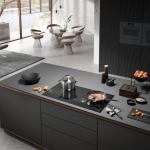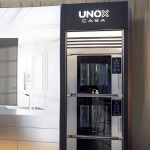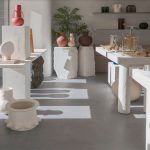Stopping Bathroom Water Damage Before It Happens
The bathroom is undoubtedly one of the most important rooms in any home. It’s a space that people spend a considerable amount of time in each day but given its nature, it’s highly vulnerable to water damage.

GALLERY
Whether it’s due to leaks, condensation or other forms of moisture, water damage can quickly ruin the charm and functionality of a bathroom, leading to structural decay, mould and mildew growth and even pest infestations.
“Waterproofing not only prevents water from entering your home but also helps in maintaining its structural integrity,” Megasealed founder and managing director Jacques Courtin says. Megasealed is a specialist, cost-effective leak repair solution provider in Australia.
“By sealing off any potential entry points such as cracks or gaps, you can ensure that water does not seep through the foundation, walls or floors, preventing any long-term damage.”
The Megasealed team has pinpointed three methods of waterproofing that have proven to prevent water damage.
- Liquid membranes
Liquid membranes are a modern and cost-effective method of waterproofing that can be applied to any surface that encounters water or moisture, also known as wet areas. This includes bathroom walls and floors, as well as horizontal areas exposed to moisture such as shower benches, shelving, half-walls, niches and especially the shower floor.
Liquid membranes also come in a variety of colours and finishes, allowing you to choose a design that complements your bathroom’s style and decor.
- Sheet membranes
Sheet membranes are plastic or elastomeric membranes that are typically bonded to the substrate using a thinset mortar or other adhesives.
One of the main issues with sheet membranes is that they can be prone to failure if not installed correctly. If the seams between the sheets are not properly sealed or if there are any gaps or punctures in the membrane, water can seep through and cause damage to the underlying substrate.
- Traditional waterproofing
When it comes to traditional waterproofing methods such as shower pan liners or hot mop shower pans, it is important to note that these methods require a higher level of expertise and experience.
These methods involve the installation of a waterproof barrier underneath the tile or stone substrate of your shower, which is then covered by a layer of thinset mortar or other adhesives.
Since 1899, Miele appliances have been crafted for longevity, effortlessly blending both form and function. Their commitment to ...
Unox Casa is the high-end residential division of UNOX, the world’s top-selling brand of professional ovens, born to ...
When we think of wellbeing, many of us picture relaxing in a mineral spa, strolling barefoot along a ...
The completion of Parkline Place marks a major milestone for Sydney’s skyline, with the 39-storey commercial tower now ...
Milan-based interior design practice Studio Shoo has completed an innovative retail space in Yerevan, Armenia, seamlessly blending sculptural ...









